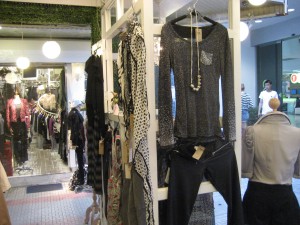Archive for the ‘culture vulture’ Category
Thai pride (or the lack thereof)
The film The September Issue just came to Bangkok, a rather obvious documentary that is Anna Wintour’s saavy way to increase Vogue mystique (and readership) while getting PR spin on her Cruella De Vil reputation. The film is destined to do well in Bangkok, where the prance of heels and brand-name bags has reached stupendous proportions of late. Korean fashion is all the rage, and I saw an abundance of pop-y fashion complete with light brown curled hair and babydoll eyelashes when I was there.
Bangkok is a city, if you don’t know, that aims to be the fashion capital of Asia. This is smart city planning in as far as the city does need unique industries to attract investment, and Thai people tend to be artist types. Bangkok already has an abudance of top advertising creatives for this reason. It’s not a city of Singaporeans, who like their law, order and enforcement of such rules. The truth is, though, Thai people aren’t that fashionable. Clothing trends come and go in extreme fads. Overall style tends towards fippery and fussy ruffles. No one walks around Bangkok and thinks, “these people dress as well as the Italians.”
Nonetheless, there are some Thai fashion designers whose collections are worthy of notice. Perhaps the most famous of this coterie is Thakoon, who dressed Michelle Obama the night that her husband won the US Democratic nomination for President. Thakoon’s featured in The September Issue as the best new designer on the scene, and even wins praise from Anna Wintour for his work. He appears all over the documentary, an obviously Thai guy with a warm vibe and an earnest starstruck-ness that is quite endearing.
When Thakoon first appeared on the movie screen, my friend and I looked around the theatre for signs of recognition. Nothing. Not a peep. Not a shoutout, not a smile, and definitely not the rousing applause that I burst into, much to the embarrassment of the audience around me.
So here’s a moment to say hey, Thailand, keep your eye out for some homegrown talent. Even if they aren’t coming to your from Korea, even if it’s not publicised enough in-country, here’s a dude from Chiang Mai who’s managed to make it big. And well done, sir.
Ah, the feminist rant
I hear tell that Australia’s gender gap in pay has widened, and it has the honour of being worse than Sri Lanka’s. Please take a moment to consider that Sri Lanka is a country battling civil war. How many women, let alone men, can be working there? So Australia– bad news, mate.
Reporting of this gender (in)equality has always interested me, I guess because reporters tend to treat these statistics with the cursory analysis of a typical newsflash, yet manage to convey a sense of surprise that there is inequality in the workforce. Seriously? No way!
A little bit of honesty would reveal — to anyone who is not white and male– that each person knows that fact for themselves, because they have experienced the insidious discrimination that is perpetrated by unconscious (and probably unwitting) persons upon them, all the time.
It happens to my Asian mother quite often, enough that she has developed an equally unconscious reflex mechanism, whereby she sends her Irish husband into the bank to do the negotiating instead of wasting her time being treated poorly by a twenty-five year old in high heels. My mother’s kind of survival coping is necessary– without it, she would be fighting anger management and self-esteem issues– but sadly does reinforce the stereotype of the petite Asian woman hiding behind a hulking Caucasian guy.
Where would we be without our heroes?
Here’s a small example: I recently finished a book called “Tolkien’s Gown and other stories of great authors and rare books” by Rick Gekoski. There were only three women authors featured out of 20 in total, although Mrs. Woolf, as she is referred to, is mentioned extensively in the chapter on T.S. Eliot and her publication of his “Poems”. It isn’t the dominant male authorship that I really object to– after all, Rick Gekoski may happen to have better stories to tell about books penned by men. Gekoski is a 20th century aficionado, so may be forgiven since 20th century canonical literature is predominately populated by men. My objection, however, is to his treatment of the female authors that he does include. He writes of Beatrix Potter’s Peter Rabbit, and J.K. Rowling’s Harry Potter. Both are children’s books, and neither are really classified as literature, a distinction he is at some pains to point out. And the chapter on Sylvia Plath — a serious poet if ever we knew one– is overwhelmingly about her neurotic behaviour and Ted Hughes’ philandering, without much reference to how the aforementioned philandering might account for her behaviour.
And if this seems like gossipy nit-picking, dear reader, it is meant merely as an example of the subtle and pervasive way that gendered memes are written into our societal unconscious, there to be enacted and reinforced generation to generation.
The country life: Daylesford
Take a look at the cute life. Notice how in Aus, cottages have this cast-iron ornamentation and come in sweet colour schemes.
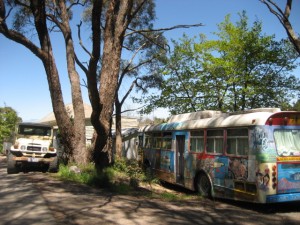
Psychadelic leftover circa 1960s
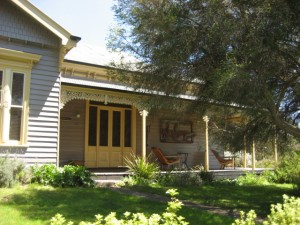
Beautiful puce cottage. A spin on the porch and rockers tranquility.
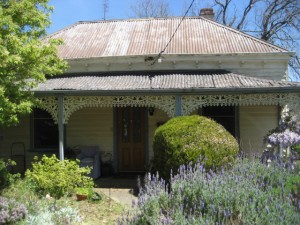
The perfect cottage comes with lavender bushes. Cape Cod, eat your heart out.
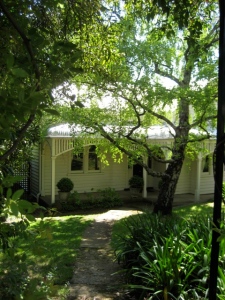
Most magical glimpse of a home
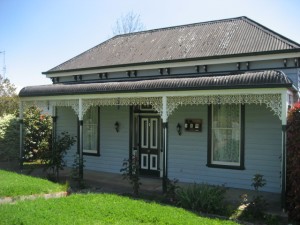
A good look at that ornamentation

The famous Lake Daylesford
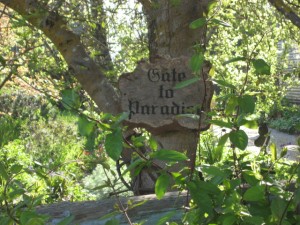
One resident has found bliss
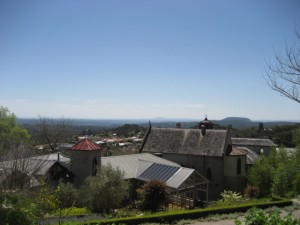
View from the top
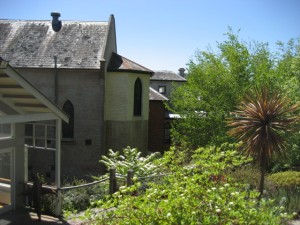
The Convent: architectural beauty, saught-after wedding destination, and great gallery to boot
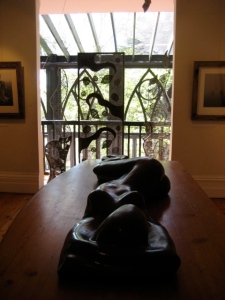
Inside we find some languorous art

Strong women at the Altar Bar

Notice the use of modern art while preserving the sanctity of the space
Now who wants to move to Daylesford?
The original name of the town is Wombat, and I much prefer it. Imagine writing to someone who lives on Wombat Hill! Incidentally, the hill is still called Wombat Hill, so there’s hope to be had for people who dream of relocating. There is definitely magic in the name of Wombat.
(Which author talked about names and the delicious pull they can have when you say them? Does anyone remember?)
I heard that before Daylesford was Australia’s top spa destination, it was a liberal gay town. Before that, it was a gold rush town. And before that, it was a sacred ground for Indigenous folk, who worshiped a female deity there. This last part isn’t talked about too much. You don’t find them advertising it on the travel Australia brochures or anything. But there are hints at the fact, like at the Altar Bar in the Convent (notice the pun? Altar boy, altar bar..) and all the women women women.
It is some subtle feminism that most people don’t notice the explosion of the female form. The owner of the gallery did a great job of using soft, pastel colours (walls painted pale purple, chairs in baby blue) and matching it with bold art and outlining (pine green window frames) so that the place doesn’t look like an overdressed cupcake. I mean this to be a compliment by the way.

A particularly fierce woman at the Altar Bar
In conclusion– Daylesford. Wombat.The tug of war between Indigenous and Anglophilia. Either way, the place has some great energy. Approach to rejuvenate, and don’t forget to look beyond the spa culture.
On greetings and slang
In keeping with the welcome theme, here’s some of how the English language can change.
Australia
It feels just like the movies when an Aussie opens the door to their house, and greets you with a “G’day mate!” It never fails to get a giggle out of me for the sheer exuberance of the phrase. It makes me want to pinch myself, and say– wait, they actually say that here? I felt the same way when I first heard a kookaburra laugh.
Some Aussie slang I’ve met so far:
Ponged— Someone who is “ponged” is smelly. My friend Rob used that word in a recent text, and in context I took it to mean that he was running late. Who knew that he was actually trying to warn me away from him! This, from a white guy sporting a hipster afro, roughly-shaved handle-bar-ish mustache, and a uniform of skinny black jeans, pointy leather shoes, and a tight ratty button down/wife beater combo.
Dinking— I really wish I had a photo of this in action. I’ll try to get one soon.
So dinking! It is the process whereby a person is carried on the handlebars of a bicycle while a larger person pushes the bike. The whole setup involves a certain amount of trust and balance, but is easier than it sounds. My experience of dinking occurred when Rob convinced me to be dinked (dunk?) from The Black Cat, an excellent bar in the Fitzroy, to dinner in Melbourne CBD. It was a most exhilarating ride, and helped along by the many downhill rushes and the need for me to jump off the handlebars whenever the bike came to a rest at traffic lights. Rob would slow down, and count three, and I would leap into the air and land, ideally, with legs on either side of the front wheel, to stand and smile at the people looking alarmingly from their cars at our precarious travelling solution.
See below for dinking in Butch Cassidy and the Sundance Kid
Ireland
Expect to be asked,“What’s the craic?”
(This is pronounced “crack”). It means what’s going on– where’s the fun?
My reaction was outright disbelief the first time I heard that. To an American ear, the question sounds an awful lot like someone asking for drugs. Imagine this conversation happening on a bench outside the staid Trinity College of Dublin, where it’s all quaint cobblestone walkways and soaring Gothic buildings– interspersed with the usual squat monument to the 1970s of course. I looked at my fellow students in disbelief, and they fell over laughing as they explained the meaning of the Irish word.
The USA
Now Americans have lots of weird slang, and there’s not enough room to include it here, but the thing that really threw me for a loop when I moved Stateside in 2003 was how everyone, and I mean everyone, asked: “How are you?” Store 24 clerks would ask me; gas station attendants would ask me; even book store clerks would ask. At first I thought that Americans were uncommonly interested in people’s well-being. Not so. For those of you who don’t know, when an American asks “how are you?” in idle conversation, it is their way of saying “hello.” They are not looking for a prolonged explanation. A smile and cheery “Great!” will do. If the false concern or short-attention of those asking concerns you, stay tuned. More on that to come.
